Learn the key differences between our four precious metal types and choose the metal which suits your style, stone choice and skin tone to make your jewellery perfect for you.
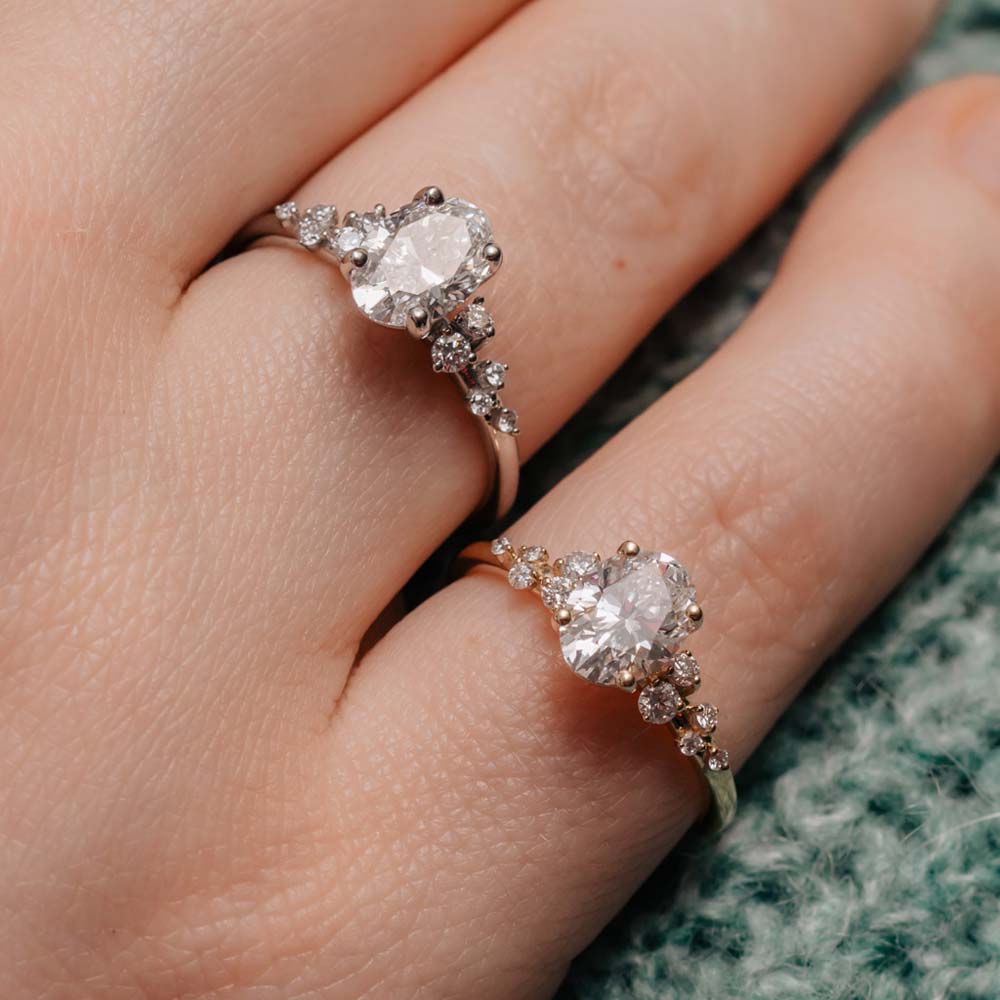
Things To Consider
OTHER JEWELLERY
You may like to consider the other jewellery you wear close by to ensure your next piece of heirloom jewellery complements your existing pieces. If you wear a lot of silver jewellery, for example, then it would make sense for your engagement ring to be platinum or white gold.
OTHER RINGS
In some cases, the metal should be determined by the jewellery you will be wearing directly next to it. Engagement rings and wedding bands should always be the same karatage of gold, or both be platinum, so that neither ring wears the other down over time. The colour gold could be different though, if you wanted to mix the metal colours.
PLATINUM VS WHITE GOLD
The difference between their appearance is very minimal; they are indistinguishable by most people. Platinum is slightly more “grey” than white gold, whereas white gold is slightly warmer. The main differences between the two come down to their density and durability.

SCS Certified
To be SCS assured, our sourcing must be compliant with the standards or the Responsible Minerals Initiative, the Responsible Jewellery Council and the LBMA: The Independent Precious Metals Authority.
This means that our jewellery meets fundamental benchmarks of social and environmental accountability as part of our commitment to being environmentally responsible.
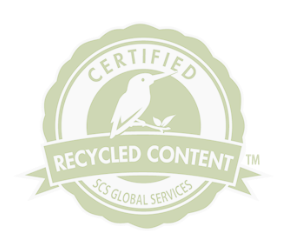
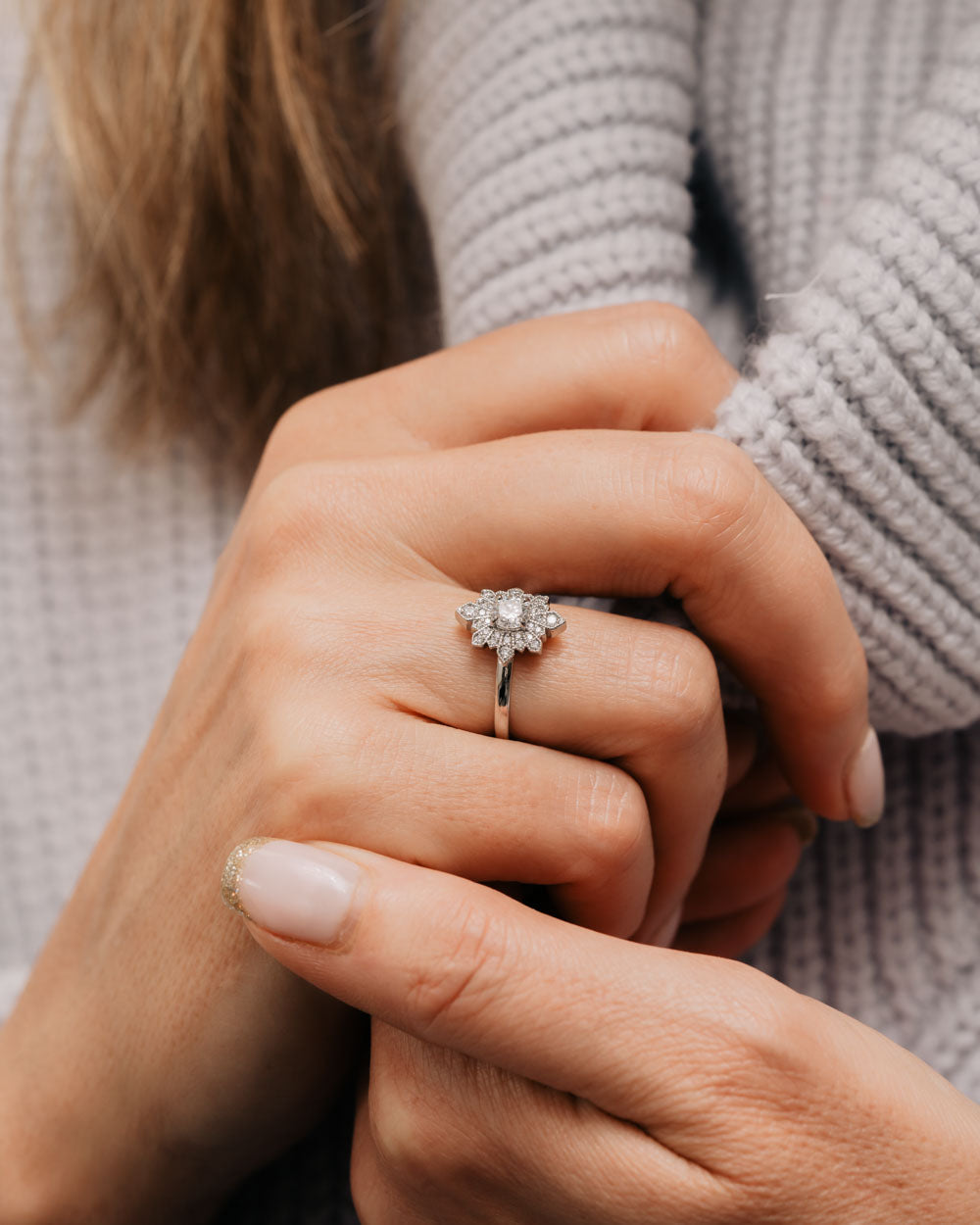
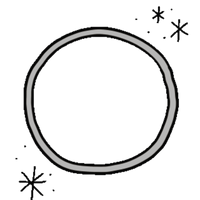
Platinum
A naturally occurring metal, with a lustrous white shine which beautifully accentuates the sparkle of a diamond. Platinum will last forever, making it the ultimate metal choice for your symbol for enduring love. As an intrinsically white metal, it will always hold its beauty, meaning re-plating is unnecessary. Platinum is also extremely durable, and its density makes it the most secure setting for your lab-grown diamond or stone.
Our platinum is composed of 95% pure platinum, with the remaining 5% made up of iridium, palladium, ruthenium and other metals. All these metals are also naturally un-reactive, which means that platinum jewellery is hypoallergenic and will not irritate the skin, ideal for those with sensitive skin.
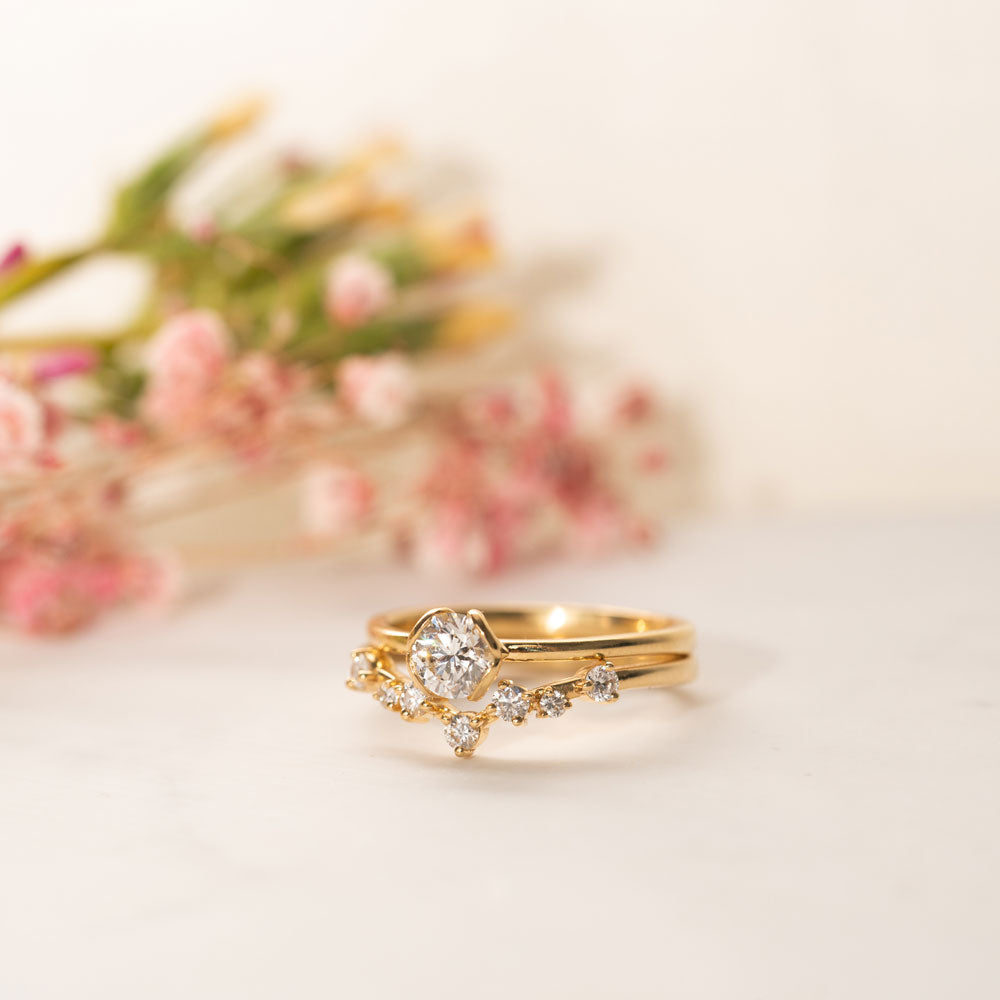

Yellow Gold
A timeless classic, world history features yellow gold jewellery from the beginning of civilisation.
Pure, 24 karat gold is not suitable for crafting into everyday jewellery as it is too soft; which is why we use 18k. In order to achieve 18 carat gold, 75% pure gold (naturally yellow in colour) is alloyed with other metals such as copper and silver to add strength and durability.
Like all gold jewellery, yellow gold needs to be polished every 12-18 months depending on how often it is worn.
Yellow gold is beautiful for most skin tones and is a particularly great choice for warmer skin tones.
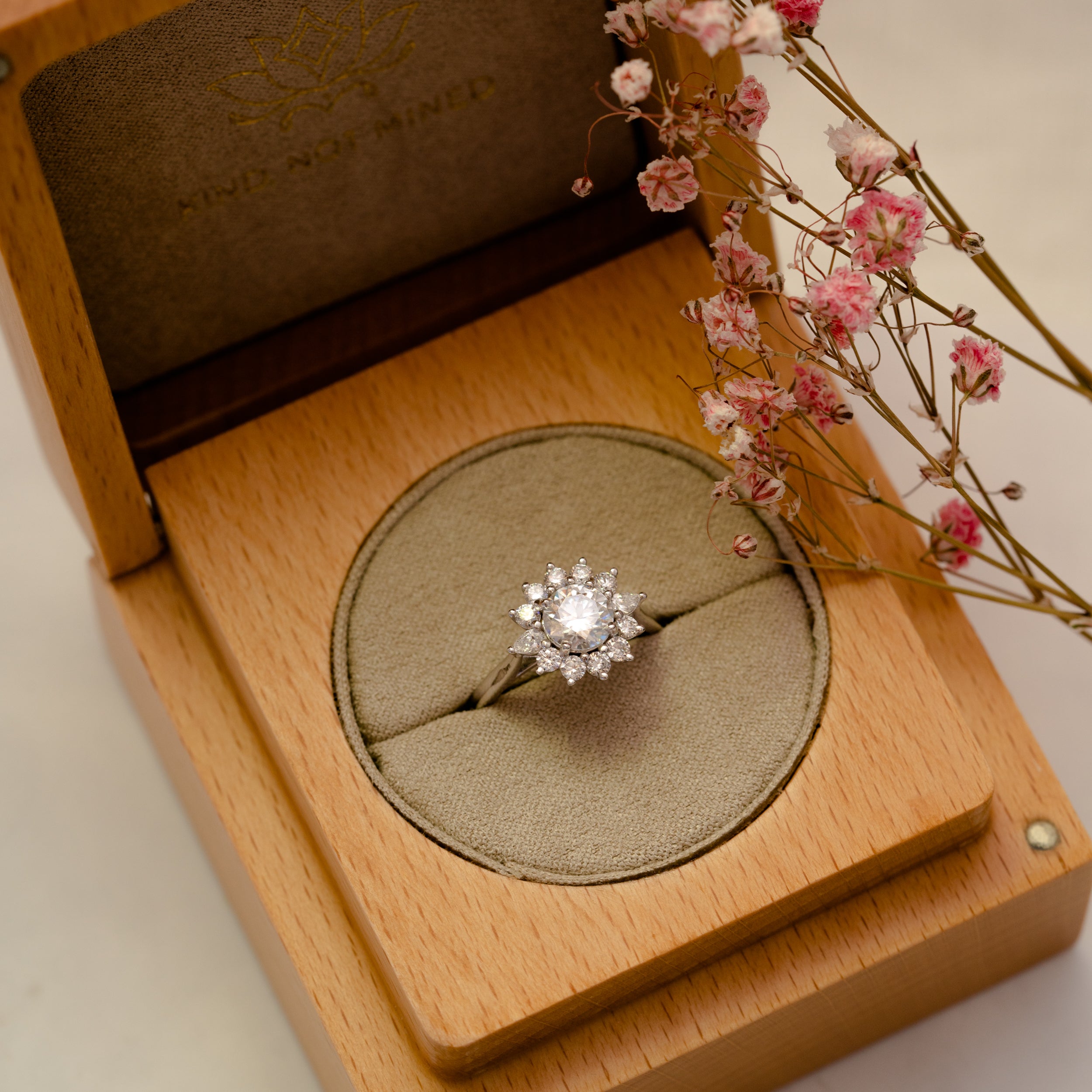

White Gold
18k is 75% pure gold mixed with white metals such as silver and palladium. The result is a warm, grey-coloured gold. In order to give the gold a “white look” it is plated with rhodium.
At Ethica Diamonds, we use 18k white gold with a higher palladium content compared to others on the market, which means that it has a whiter intrinsic colour, rhodium plating.
We recommend that if pure white is the look you prefer, you may want to consider platinum instead.
Silver coloured metals flatter almost all skin tones, but it’s a particularly good choice for cooler skin tones.
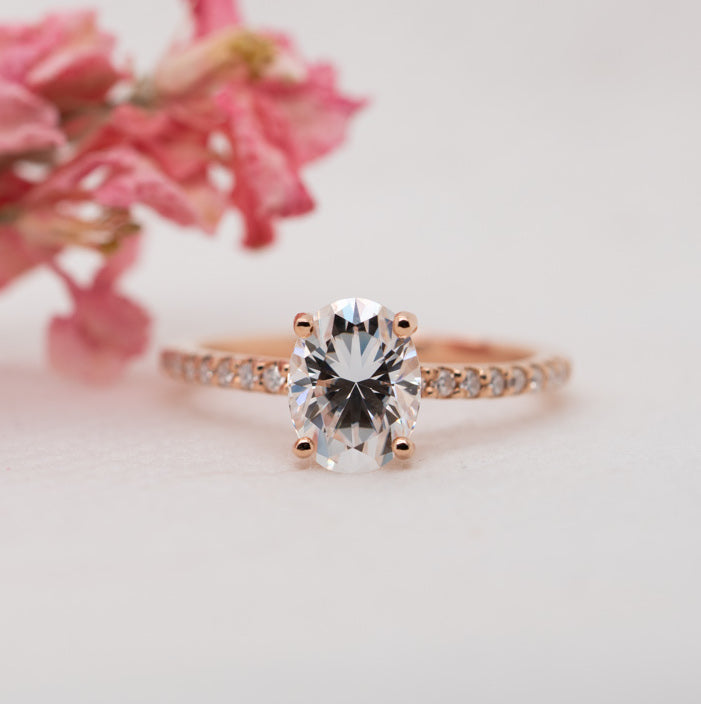

Rose Gold
18k Rose gold, sometimes referred to as red or pink gold, is a warm and rich metal which is becoming more popular amongst those who are looking for a ring that feels one-of-a-kind.
The beautiful pink blush-hue of rose gold is created by using a copper alloy with the gold. At Ethica Diamonds, we use 18k gold with 25% copper added to the alloy, to ensure a rose colour that is more pink than red. 18k rose gold is typically a mixture of gold, copper and silver, to achieve greater durability and its desired rosy colour.
Rose gold is generally recommended for warmer and darker skin tones, although it can be suitable for cooler skin tones, too. We would only recommend avoiding rose gold if you have red undertones.
White Gold Vs Platinum
Know which silver metal suits you best.
Both metals look very similar but their properties differ. Learn their differences & determine which is better for you by considering our advice below.
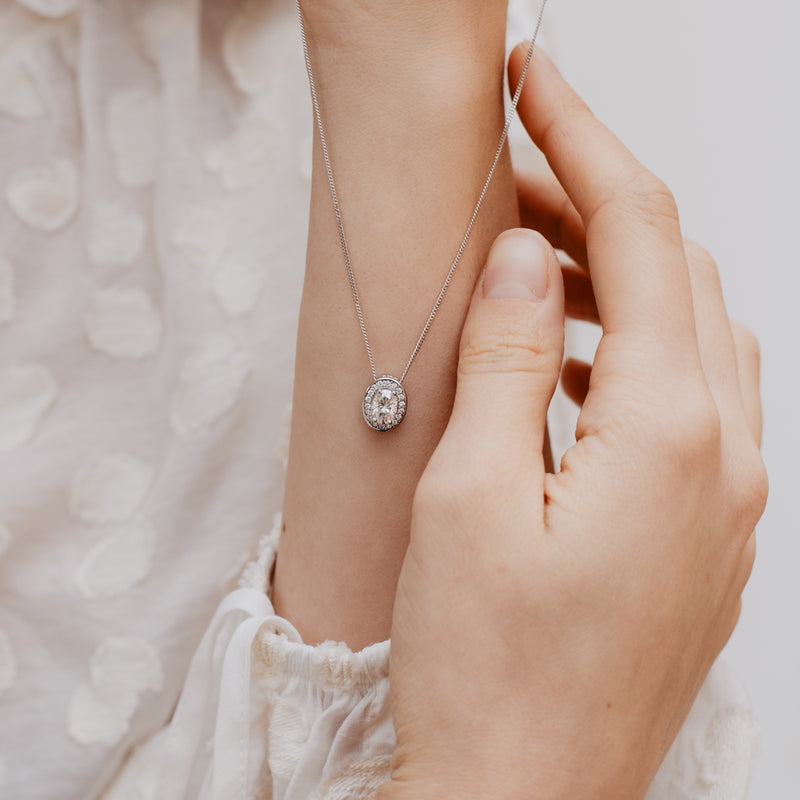
White Gold
Gold in its natural state is yellow. In order for white gold to appear white in colour, gold must be mixed (also known as alloyed) with naturally white metals, like palladium or silver, which makes the 18k gold alloy a warm white colour. To give white gold its sought after sheen, it's rhodium plated. With time, rhodium plating will wear away revealing a yellow-ish tinge, and the ring will need re-plating every 12-18 months to maintain its lustre and radiance. The bad news is that plating involves the use of toxic chemicals which is not an environmentally friendly process. At Ethica, we use white gold that has a higher concentration of palladium, which extends the life between plating and some people actually prefer the soft champagne colour of this metal once the plating has worn off or choose to not have it plated at all. If you prefer a cooler white coloured metal, platinum would be a better choice.

Platinum
Platinum is one of the world’s most rare precious metals; in fact, 30 times more so than gold and annually, only about 133 tons of platinum are mined, compared to around 2,000 tons of gold. It is also denser than gold, so the same piece of diamond jewellery made in platinum would be approximately one third heavier than in 18k gold of the same design. Platinum is not only denser but also stronger than gold and will require less maintenance over the years, while offering a similar finished appearance to white gold due to its natural bright-white appearance. Platinum is a naturally occurring white metal, which is hypoallergenic and will not irritate skin, and never discolours or tarnishes. Over time, platinum will inevitably show signs of wear however due to its durability and strength, scratches are merely a displacement of the metal and none of its volume is lost, whereas gold wears down over time.
Gold Purity
100% pure gold is too soft to wear as jewellery, so it is alloyed with other metals that give it strength and durability. Silver, copper, nickel and zinc are used, with palladium added to white gold, and higher quantities of copper used in rose gold. Karatage, denoted by a number followed by “k” indicates purity, or how much of the metal in a piece of jewellery is gold. Karatage is expressed in 24ths, making 24k gold, 100% gold. We craft our jewellery using 18k which is composed of 75% gold, which is alloyed with other metals to make it strong enough for everyday wear.
Percentage of Gold
Description
24 karat
100%
Too soft for fine jewellery
22
91.7%
Too soft for fine jewellery
18
75%
Ideal for fine jewellery
14
58.3%
Ideal for fine jewellery
9
41.7%
Acceptable for diamond jewellery
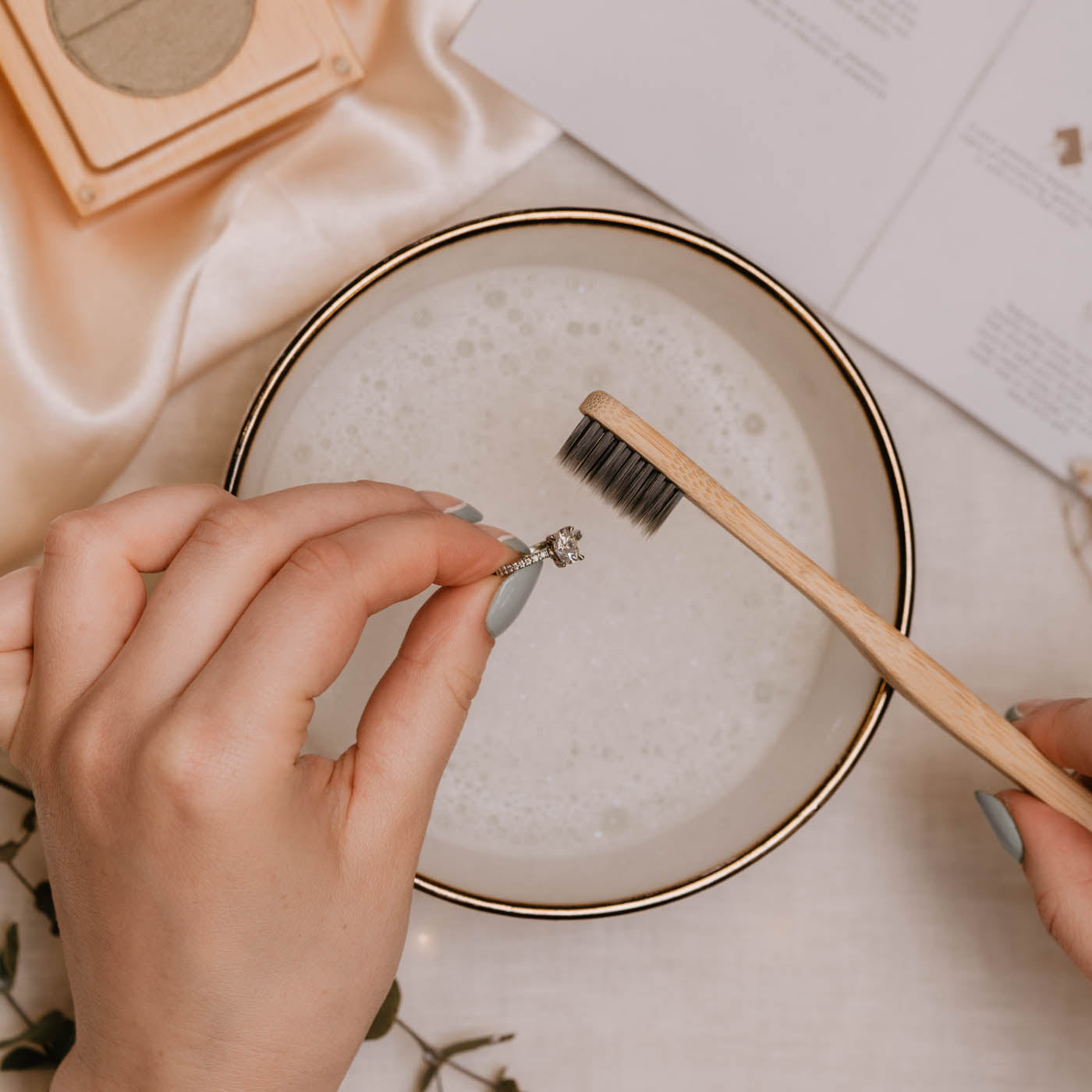
Caring For Your Jewellery
Since gold and platinum are natural elements, they are affected by harsh chemicals such as chlorine or other cleaning products. We recommend that you remove your jewellery when using chemicals, to reduce daily abrasions and prolong the lustre. To clean jewellery, use a solution of warm water and detergent-free soap with a soft-bristled brush. When not worn, store your jewellery in soft cloth bags or the original box, to protect them.
FAQ's
Is rhodium plating white gold harmful to the environment?
Most of the white gold purchased on the high street is rhodium plated, which ensures a high shine on the jewellery. However, rhodium plating is one of the most environmentally damaging processes in the jewellery industry.
At Ethica, we recommend you choose platinum, especially if your purchase is a ring, since rings get the most wear and rhodium plating will wear off quicker. An exception to this would be if you are wearing platinum against another gold ring, in which case platinum would wear it down.
What’s the difference between red, pink and rose gold?
Although the names are often used interchangeably, the difference between red, rose, and pink gold is the copper content – the higher the copper content, the stronger the red colouration. Since rose gold is an alloy, there is no such thing as “pure rose gold”.The more copper, the deeper the rose hue. The more silver, the paler the pink colour.
Is platinum better than white gold?
We recommend platinum instead of white gold for the following reasons:1. It is stronger and more secure for setting precious gems2. It is intrinsically white, meaning there is no need for plating - unlike white gold3. It doesn’t wear down over time 4. It is heavier, making platinum jewellery feel more substantial and luxurious



